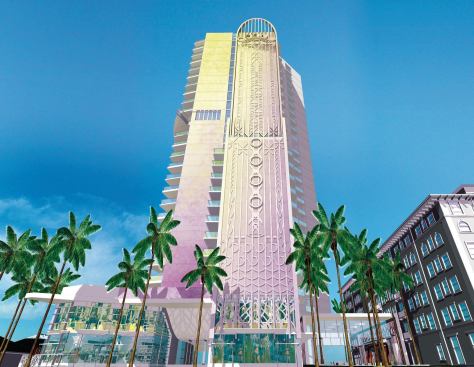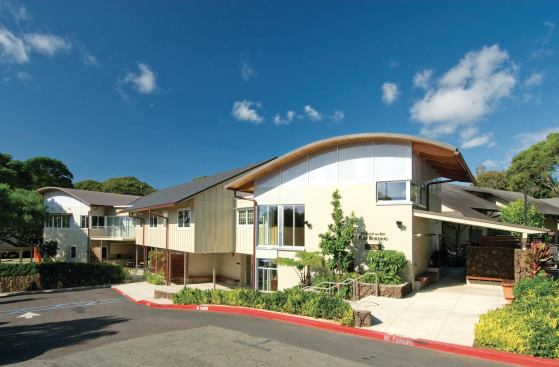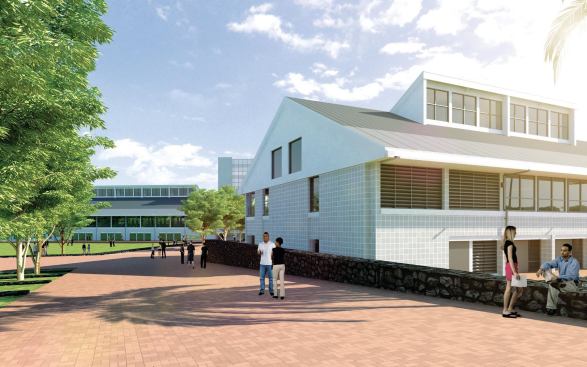WCIT Architecture
Moana Diamond Head Tower Architect: WCIT Architecture, Honolulu …
For many, Honolulu conjures images of Hawaii Five-O, the Brady Bunch “idol” episodes, or picture postcards of Diamond Head and the Royal Hawaiian Hotel. “But it’s not Waikiki and tourist spots” alone, says sansei (or “native”) Lorrin Matsunaga, AIA, partner at local firm Urban Works. “The city is a collection of interesting neighborhoods that are trying to find some kind of authenticity with regards to culture and place.”
The county’s population has grown 8.8 percent since 2000, fueling demand for developments such as the 26-story, 86-condo, 60-room Moana Diamond Head Tower, designed by WCIT Architecture, a local firm. As the first hotel development built on the beach in more than 30 years, the new structure will allow access to the ocean and open new views that are currently obstructed.
Market Stats
2.82
Expansion Index Value, Honolulu Metro Area
The Expansion Index from Reed Construction Data is a 12- to 18-month look ahead at the construction marketplace. A value of 1.0 or higher signifies growth.
Source: Reed Construction Data
953,207
Metro Population, 2010
Source: U.S. Census
969,462
Projected Metro population, 2020
Source: Enterprise Honolulu
5.4%
Unemployment, September 2011
Source: Hawaii Department of Numbers
4.7 million s.f.
Class A Office Inventory
Source: Colliers Monroe Friedlander
14.2%
Class A Office Vacancy Q3 2011
Source: Colliers Monroe Friedlander
Tension between preservation and demand affects many projects. “Finding a respectable balance is a major challenge,” says Robert K. Iopa, AIA, WCIT’s president, who was born and raised in Hawaii. “Open and respectful dialogue has begun and needs to continue.”
There’s more support for projects that embrace organic architecture. “The term ‘Hawaiian sense of place’ is a blend of cultural ideas into a design concept that’s specific to the islands,” explains third-generation kama‘aina (“resident”) Benjamin Woo, AIA, president of Benjamin Woo Architects. Features such as deep eaves, hip roofs, large operable windows, and natural ventilation are hallmarks of the local style.
“What we try to do is retain what is distinctive about this place and design architecture accordingly,” says John Hara, FAIA, who was born and raised in Honolulu. One example: The 35-acre University of Hawaii West Oahu Campus by John Hara Associates. The exterior walls feature custom-size concrete masonry manufactured locally, and the buildings form outdoor gathering spaces (appropriate, since “Oahu” means “gathering place”).
With capital still scarce, meeting demand is a challenge. A lot of work has involved renovations with smaller financial requirements. Consider the Hanahau‘oli School Po‘e Classroom and Administration Building (Urban Works and Geoffrey Lewis Architect), which is an update to a school founded in 1918.
To spur development, the state legislature funded a Public Land Development Corp. earlier this year to spur public–private development and income-producing opportunities on state lands. Most locals are cautious. “Most economic forecasts indicate a slow long lull period with limited growth,” says Mike Hamasu, director of the research and consulting division of Colliers Monroe Friedlander, a local commercial real estate firm.
That’s in part because of the city’s reliance on tourism and government services. Therefore, Hamasu says, “Construction is likely to remain limited with a heavy focus on infill redevelopment, transit-oriented development, spot retail development, and hotel renovation activity.”


